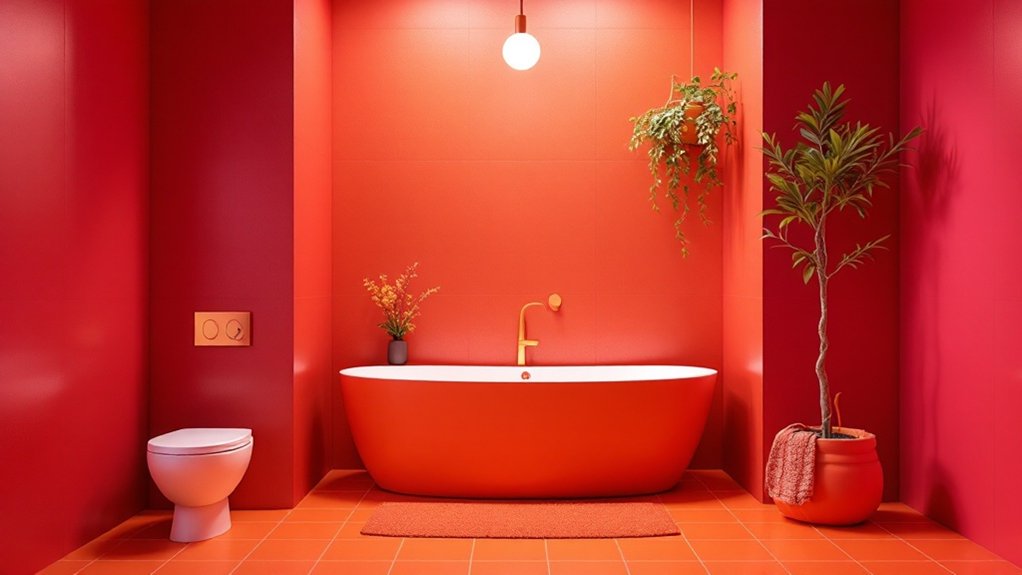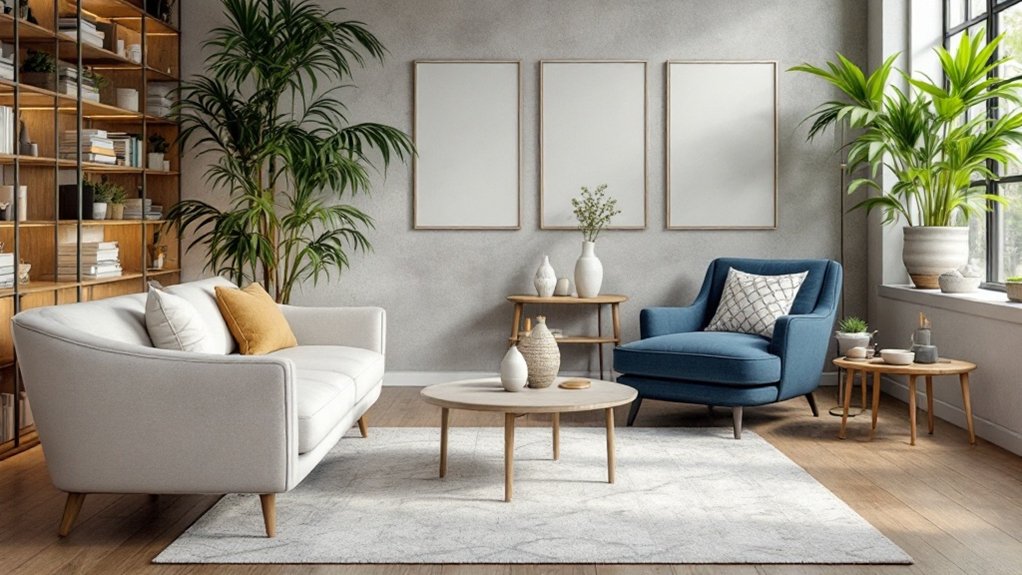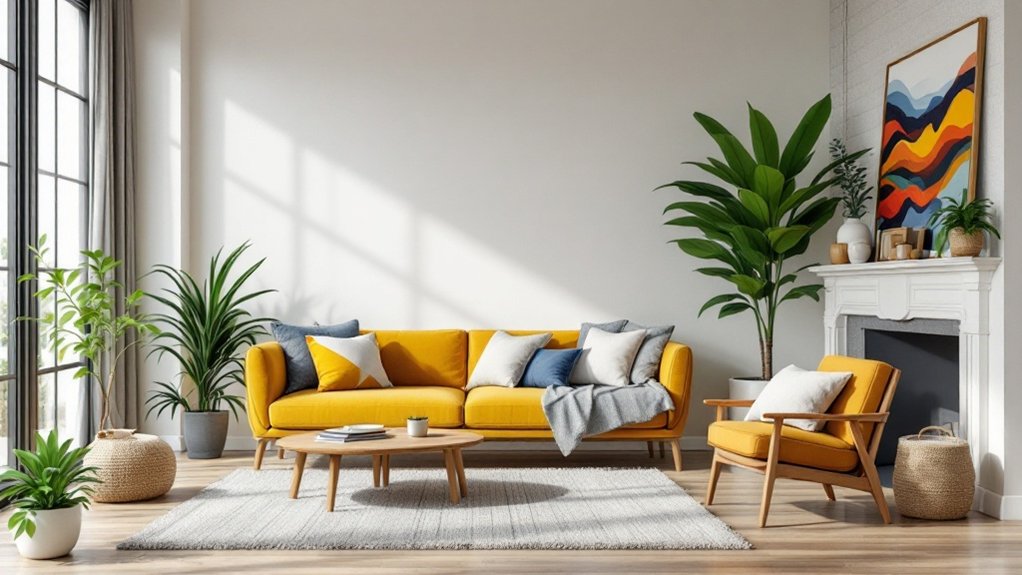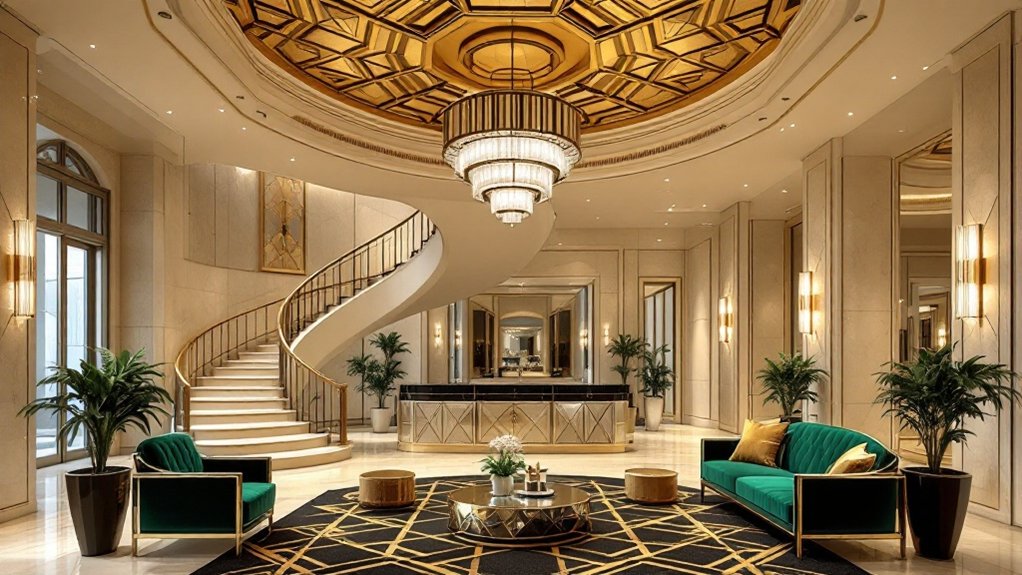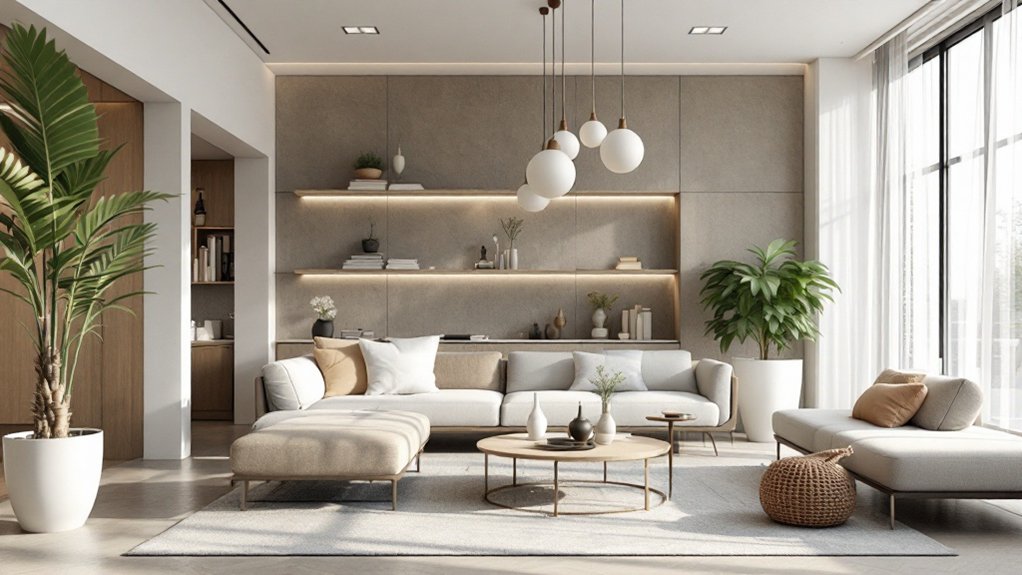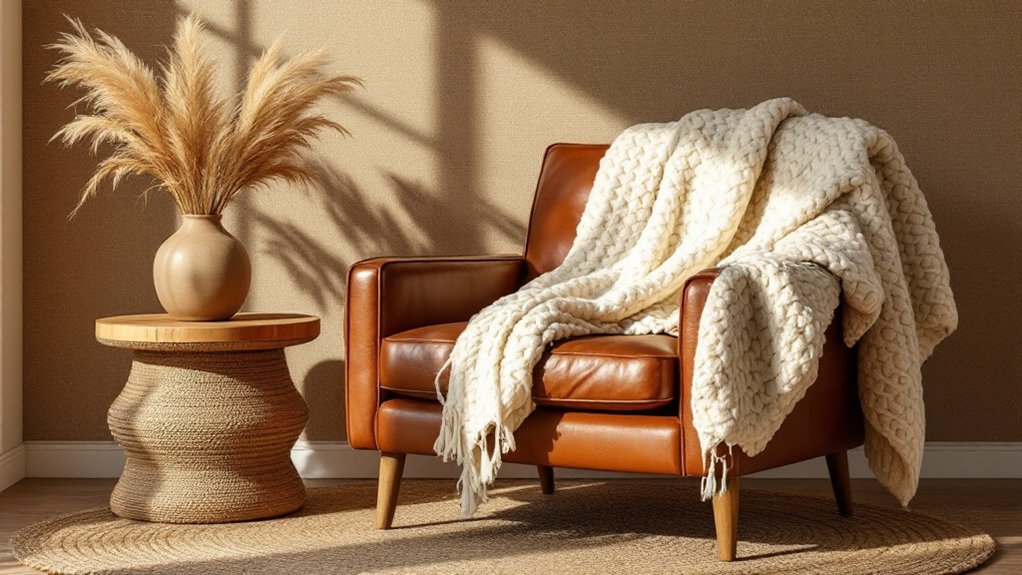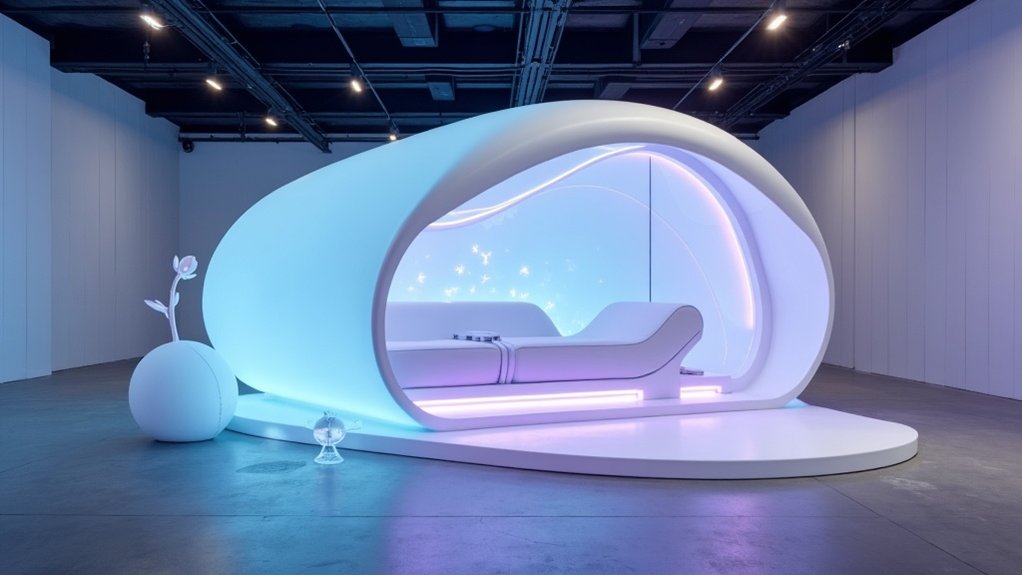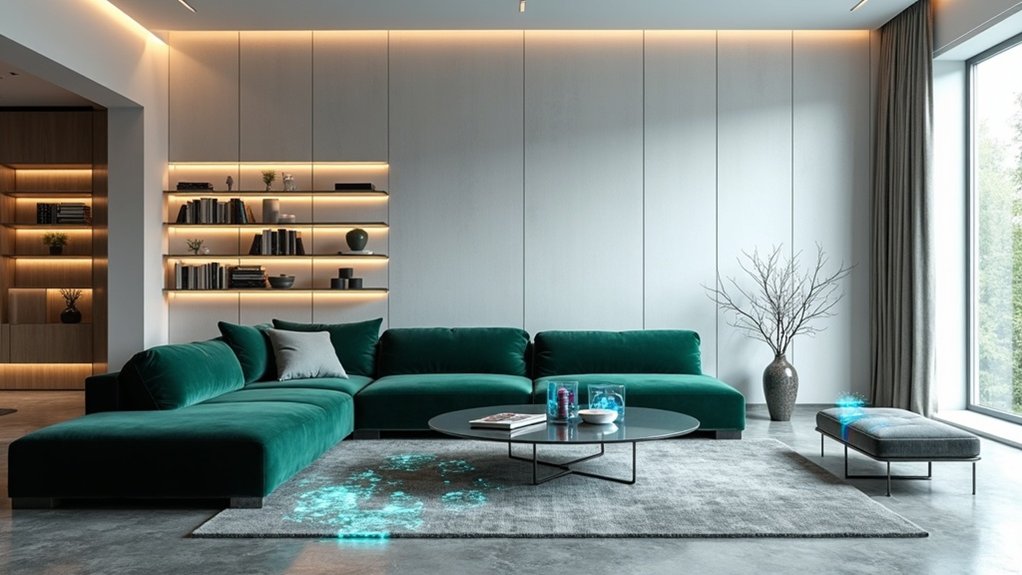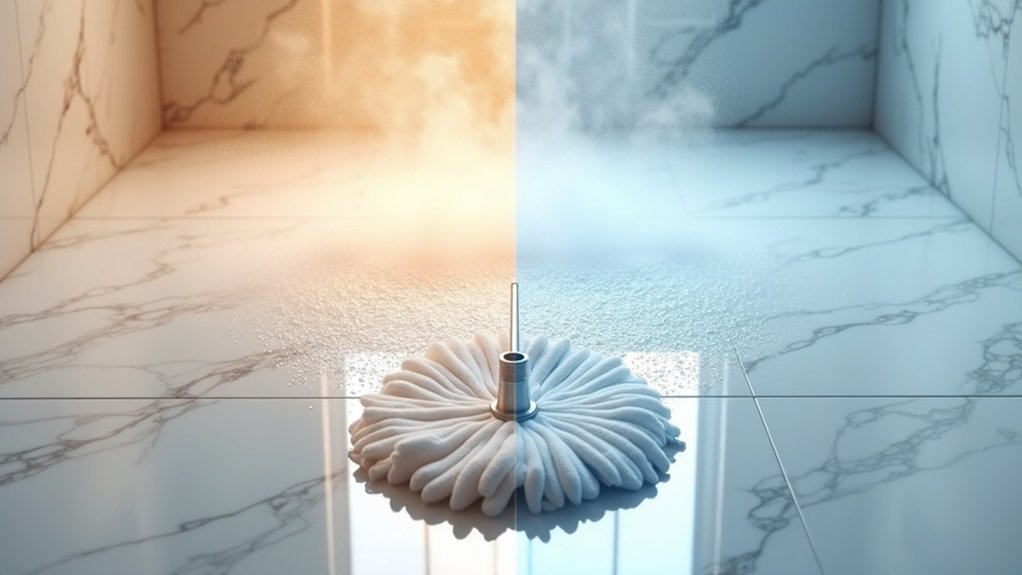Modern bathrooms are embracing vibrant color schemes that energize morning routines and improve wellbeing. Industry experts note a decisive shift from clinical white spaces toward bold, personalized designs incorporating ocean-inspired blues, seafoam greens, and warm earth tones. These thoughtful color choices, implemented through tiles, paint, and innovative lighting solutions, create mood-enhancing environments that transform daily rituals. From color-drenched walls to LED-enhanced fixtures, contemporary bathroom design offers countless possibilities for those seeking to revitalize their personal spaces.
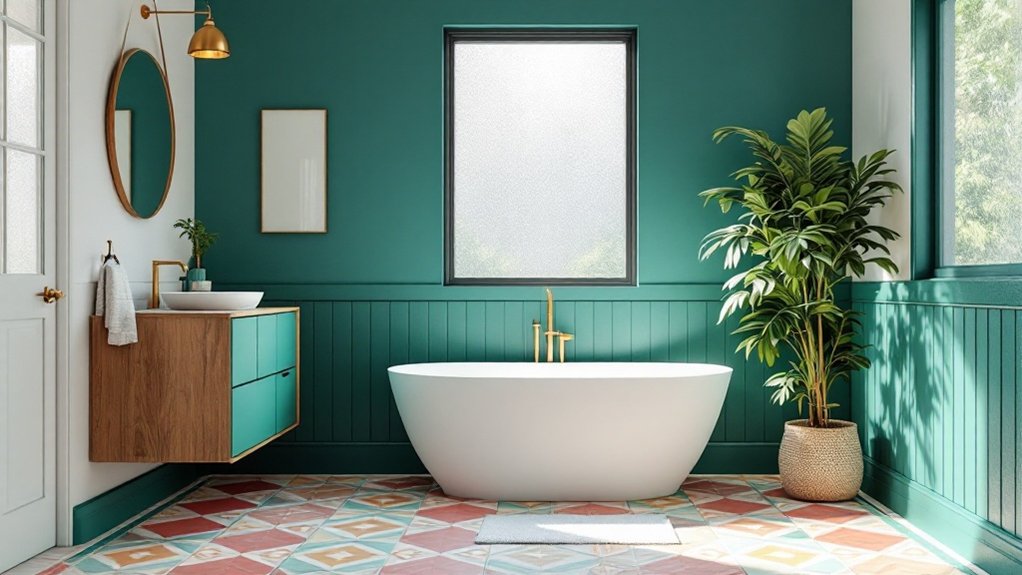
The days of sterile, all-white bathrooms are over, as homeowners increasingly welcome vibrant hues and bold color choices to transform their personal sanctuaries. Industry forecasts for 2025 spotlight ocean-inspired palettes, with deep blues and seafoam greens leading the charge, while earthy neutrals maintain their enduring appeal through sophisticated combinations of taupe, warm beige, and golden brown tones. The nostalgic appeal of Art Deco tiles adds a touch of timeless elegance to modern bathroom designs.
The application of color has evolved beyond simple wall paint, encompassing a variety of innovative techniques. Interior designers are embracing "color-drenched" effects, where walls, ceilings, and trim work harmonize in matching or tonal hues. Colored tiles, particularly in trending shades like turquoise and pistachio green, create striking accent walls and floor designs, while modern lighting solutions, including LED fixtures, amplify these vibrant choices. Dimmable lights provide versatile control over the bathroom's ambiance and mood throughout the day.
Modern bathrooms transcend basic paint choices, embracing full-room color immersion through coordinated walls, tiles, and innovative lighting techniques.
Color psychology plays a vital role in bathroom design decisions. "Blues and greens create a spa-like atmosphere that promotes relaxation and tranquility," notes color specialist Sarah Chen, "while warm yellows and golds can energize morning routines." This scientific approach to color selection has influenced designer-approved pairings, such as cornflower blue with chrome accents and seafoam green with brass fixtures.
Market data reveals a significant shift in consumer preferences, with Pinterest and home décor platforms reporting substantial increases in searches for colorful bathroom inspiration. Millennials and Gen Z demographics particularly gravitate toward bold choices, driving retailers to expand their offerings of vibrant fixtures and finishes. This trend has sparked a renaissance in bathroom design, with practical considerations seamlessly integrated into aesthetic choices.
Functional aspects remain paramount in these colorful transformations. Designers recommend damp-resistant paints and tiles for durability, while light-colored walls can make smaller spaces feel more expansive.
Natural materials like wood and stone help ground bold color schemes, creating balanced, livable spaces. Whether through a dramatic violet accent wall or a subtle seafoam tile installation, today's bathrooms reflect a growing desire for personalized, mood-enhancing spaces that invigorate the daily routine.
Frequently Asked Questions
How Can I Prevent Bright Bathroom Colors From Fading Over Time?
To preserve vibrant bathroom colors, several key preventive measures are crucial.
Using mild detergents and soft cleaning tools protects pigments from premature breakdown, while proper ventilation reduces humidity-related fading.
Installing UV-protective window treatments shields surfaces from harmful rays, and selecting high-quality, dampness-resistant finishes provides additional durability.
Regular maintenance, including prompt touch-ups and avoiding harsh chemicals, helps maintain color intensity throughout the space's lifetime.
What Colors Make a Small Bathroom Appear More Spacious?
Light colors and reflective elements play vital roles in creating the illusion of space in small bathrooms. Pure whites, pale blues, and soft neutrals maximize light reflection while making walls appear to recede.
Cool tones like mint green and subtle aqua contribute to an expanded feel, while semi-gloss finishes improve spatial perception.
Maintaining visual continuity through consistent color schemes and incorporating reflective surfaces, such as mirrors and glass elements, further amplifies the sense of openness.
Are Colorful Bathrooms Harder to Sell When Listing a Home?
Yes, colorful bathrooms can present significant challenges when selling a home.
Market data shows that bold or unconventional bathroom colors often decrease buyer interest and may lower offer prices. According to Zillow's analysis of 32,000 home sales, while light blue bathrooms can increase value by $5,440, bright or unusual colors like pink and yellow typically deter potential buyers.
Real estate experts consistently recommend neutral or light hues to maximize resale potential and appeal to a broader market.
Which Bathroom Colors Are Best for Reducing Mold and Mildew Visibility?
Dark-colored bathroom surfaces, such as black, deep brown, or charcoal gray, are actually the worst choices for managing mold visibility as they can mask the presence of potentially harmful growth.
Light-colored surfaces like white, cream, or pale gray offer ideal detection capabilities, making it easier to spot mold and mildew before they become serious problems.
This improved visibility allows prompt intervention and cleaning, ultimately supporting better bathroom maintenance and occupant health.
How Do Different Lighting Types Affect Bathroom Paint Color Choices?
Different lighting types significantly influence bathroom paint color selection.
Natural light from various window orientations affects color perception: south-facing windows intensify warm hues, while north-facing ones mute colors.
Artificial lighting furthermore plays an essential role – soft white bulbs (2700-3000K) improve warm colors but dull cooler tones, whereas daylight bulbs (3500K+) brighten dark colors and complement cool shades.
Understanding these interactions helps guarantee ideal color appearance throughout the day.
